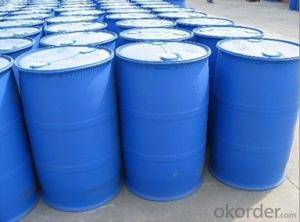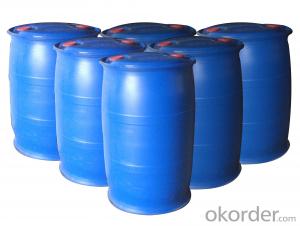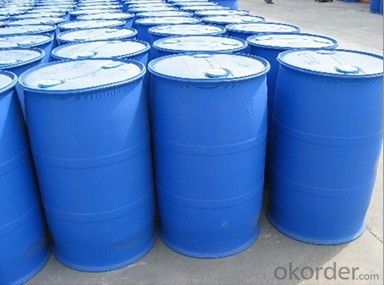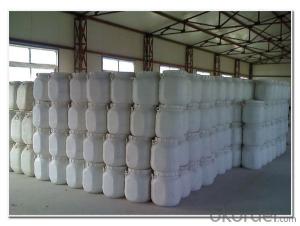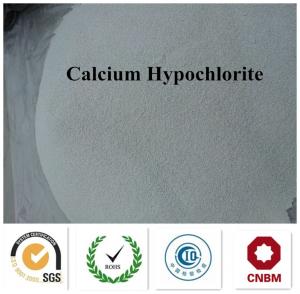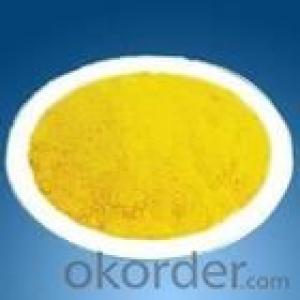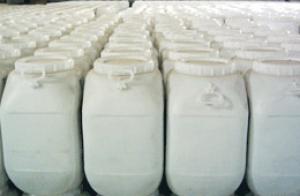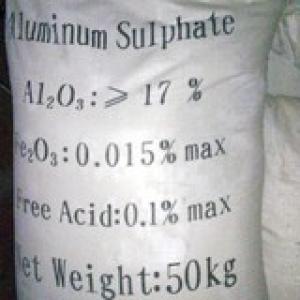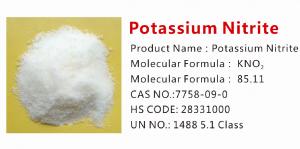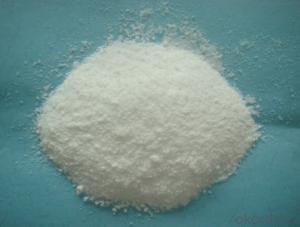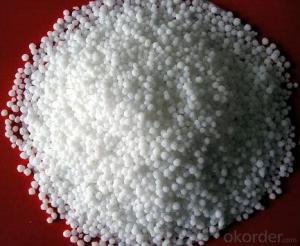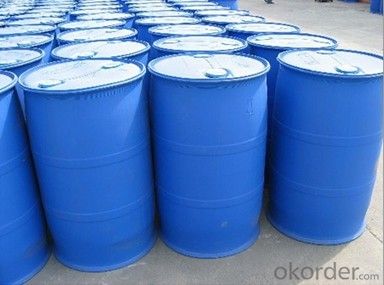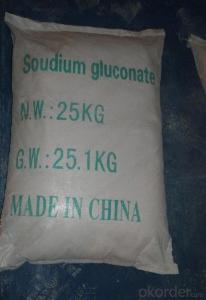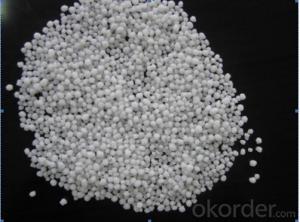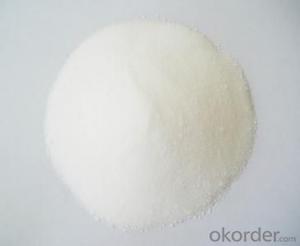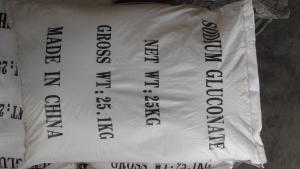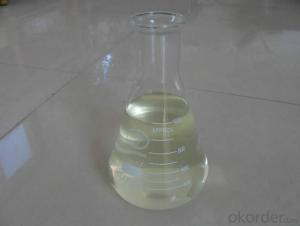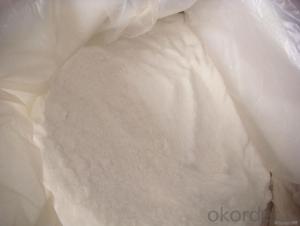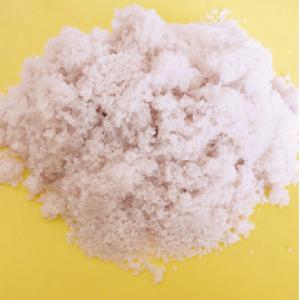Sodium Gluconate Chemical Liquid Construction Chemical
- Loading Port:
- China main port
- Payment Terms:
- TT OR LC
- Min Order Qty:
- 1000 kg
- Supply Capability:
- 500000 kg/month
OKorder Service Pledge
OKorder Financial Service
You Might Also Like
| 30% liquid sodium gluconate |
Technical Index: Q/140700RHP001-2007
White or light yellow liquid
Concrete Retardation, Paul plastic, plating complexing agent, water stabilizer, printing and dyeing industry are color agent,Iron steel surface treatment agent
|
Items | Specification (tech grade) |
Description | white or yellow crystalline powder or granula |
Identification | meets the requirements |
Loss on dry | ≤1.0 % |
Reducing substances
| ≤0.5% |
Sulfate | ≤0.05 % |
Chloride | ≤0.07 % |
Pb | ≤0.001 % |
Heavy metals | ≤0.002 % |
Assay | ≥98.0 % |
FAQ
1.Q: What is MOQ?
A: Our MOQ is 1 TON.
2.Q: Could you offer free sample?
A: We can provide free samples to you for quality testing.
3.Q: What about your packing?
A: For liquid: Flexitank, or IBC tank 1000L
For powder:Woven fabric bag with plastic film liner( 25kg or 1000kg)
Clients’ packing is workable.
4.Q: How about your productive capacity?
A: 150000 tons/Year.
5.Q: What is your delivery time?
A: Within 7 days after received deposit or L/C at sight.
- Q: What is inorganic salt
- As a result of metabolism, every day a certain amount of inorganic salts from a variety of ways out of the body, which will be added through the diet. The metabolism of inorganic salts can be judged by analyzing the concentration of blood, hair, urine or tissue. The role of inorganic salts in the human body is interrelated. In the appropriate concentration range beneficial to the health of people and animals and plants, lack or too much can cause disease, and disease and affect its metabolism, often increase its consumption. In China, the lack of calcium, iron and iodine is more common. Selenium, fluoride and other geochemical environment with the different, both the lack of disease such as Keshan disease and Kashin-Beck disease, teeth, etc., there are too many diseases such as fluorosis and selenium poisoning.
- Q: Children eat what to add the body of inorganic salts
- Such as fruits, vegetables, beans or soy products, kelp, eggs and so on. Eat hot and humid food: watermelon, bitter gourd, peach, ebony, strawberry, tomatoes, cucumber, mung bean and so on.
- Q: During the different periods of plant growth, the amount of water and inorganic salt required is different.
- Plant life, although the need for a variety of inorganic salts, but different plants on the various types of inorganic salt requirements are different, such as cabbage, spinach and other human needs leaves of vegetables need nitrogen containing inorganic salts, tomato, peanuts need phosphorus Of the inorganic salt and more, sweet potatoes, potatoes need potassium-containing inorganic salts; the same plant with the growth period of the different requirements of inorganic salts are not the same, for example, plants in the seedling period requires nitrogenous inorganic salts , In the flowering, the results of the period of time need more phosphorus-containing inorganic salts. Therefore, different plants and the same plant growth period, the need for inorganic salts are different. So the answer is: different; different
- Q: What are the important physiological effects of inorganic salts in cells
- Composition of cells in some important compounds,
- Q: What foods contain zinc-containing inorganic salts
- No. 4: Chibi (11.58 / 34g / 100g)
- Q: The lack of symptoms and food sources of several inorganic salts
- Food sources of inorganic salts containing calcium Source: dairy products, beans, cereals, kelp and so on. Source: seafood, etc. Food of iron-containing inorganic salts Source: Fruits Containing iodine-containing inorganic salts Source (trace): seaweed, jellyfish, corn, mussels, etc. Zinc-containing inorganic salt food sources (trace): animal liver (viscera), fruit, peanuts, etc.
- Q: what is the function of salts in DNA extraction?
- The role of the salt is to neutralize the charge of the DNA's sugar phosphate backbone. This makes the DNA less hydrophilic (less soluble in water). Ethanol has a lower dielectric constant than water so it's used to promote ionic bonds between the Na+ (from the salt) and the PO3- (from the DNA backbone) causing the DNA to precipitate, to extract DNA finally..
- Q: Does the plant roots absorb inorganic salt ions must be active
- Plants absorb inorganic salts and do not necessarily absorb water. Plants absorb moisture and absorb inorganic salts are two relatively independent processes. Plants absorb moisture through the infiltration of root cells to absorb water, the process is essentially free of water diffusion process, neither the carrier nor the need for energy; and plant absorption of inorganic salts is carried out by means of active transport, This process requires the carrier and consumes the energy generated by cell metabolism. Of course, plant water absorption and absorption of inorganic salts are a certain association, inorganic salts to be dissolved in water to be absorbed, and inorganic salt ions in the transport of plants can not be separated from water.
- Q: A. oxygen demanding wastesB. organic plant nutrientsC. inorganic plant nutrientsD. water soluble inorganic chemicalsE. sediment
- Acids, D. water soluble inorganic chemicals salts, D. water soluble inorganic chemicals metals E. sediment
- Q: What are the nutritional requirements for bacterial growth?
- The nutritional conditions required for bacterial growth generally include water, carbon, nitrogen, inorganic and growth factors
Send your message to us
Sodium Gluconate Chemical Liquid Construction Chemical
- Loading Port:
- China main port
- Payment Terms:
- TT OR LC
- Min Order Qty:
- 1000 kg
- Supply Capability:
- 500000 kg/month
OKorder Service Pledge
OKorder Financial Service
Similar products
Hot products
Hot Searches
Related keywords
